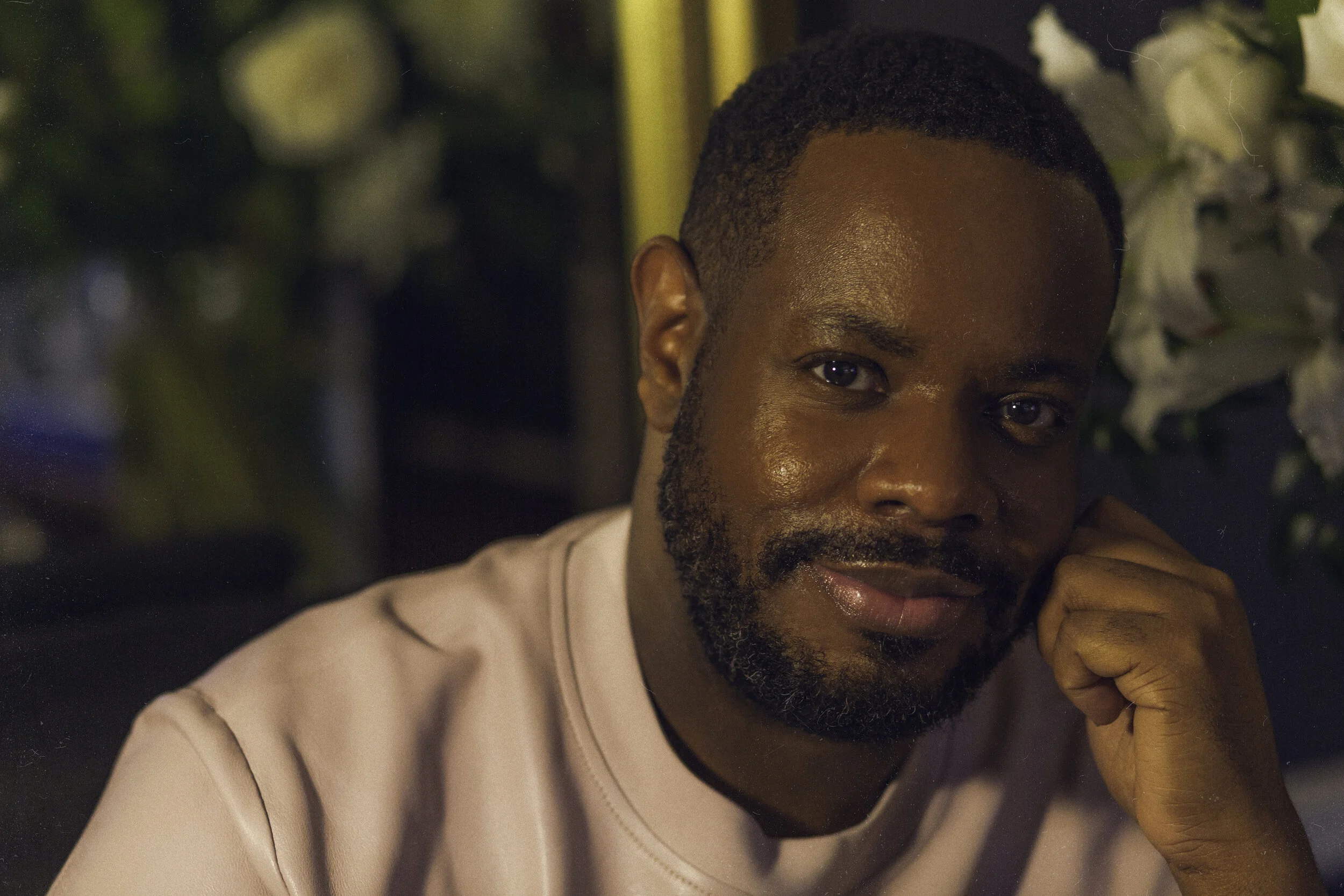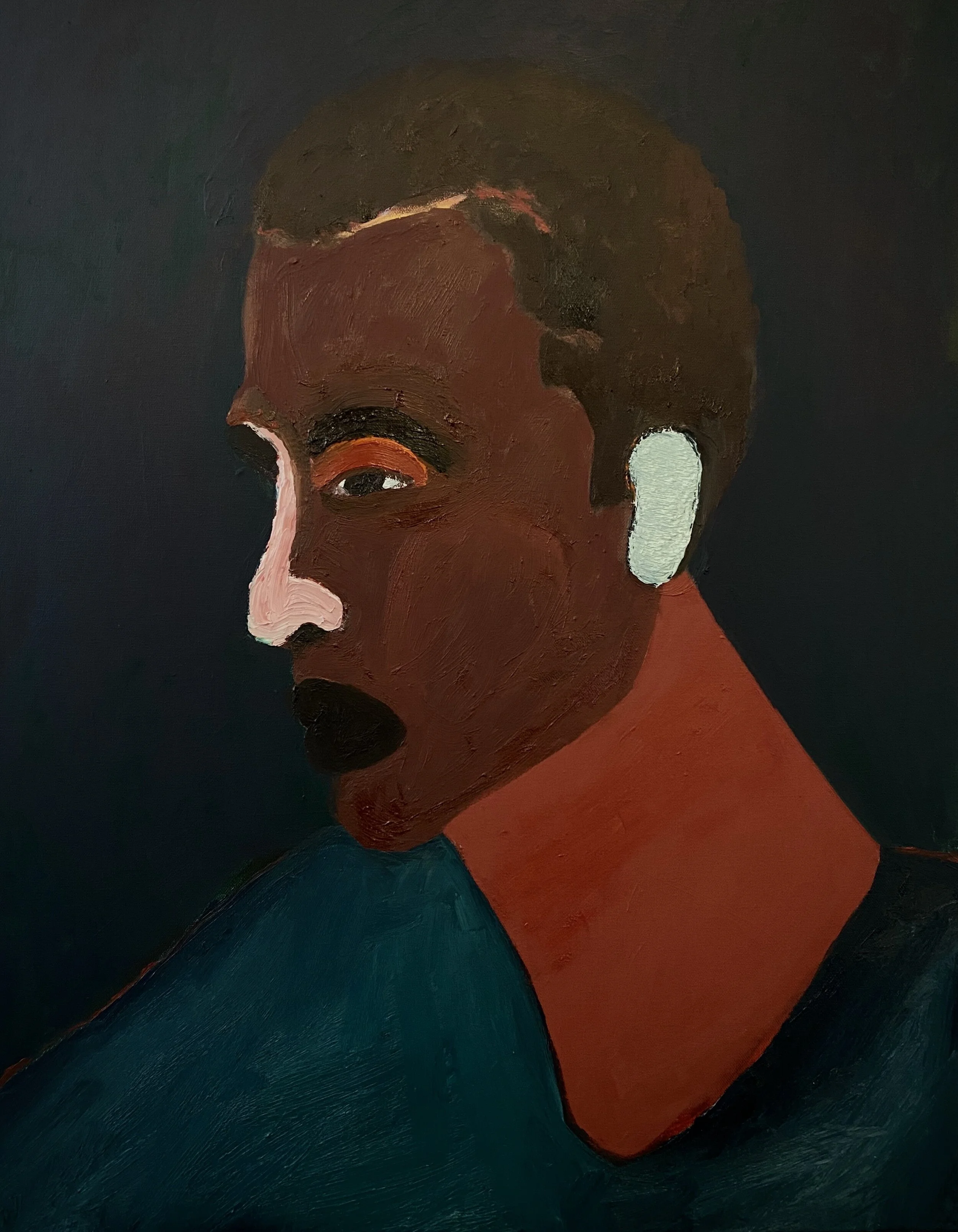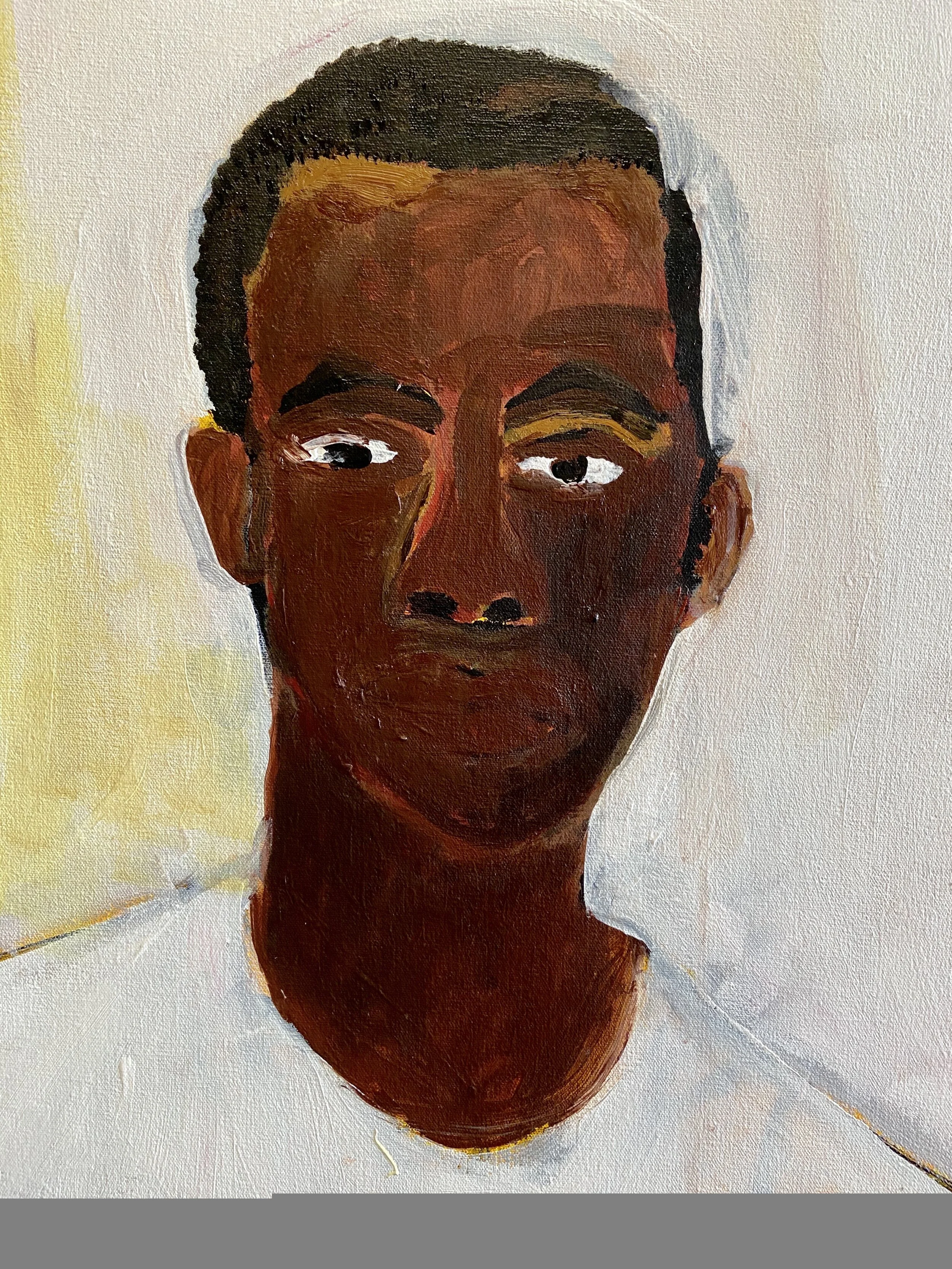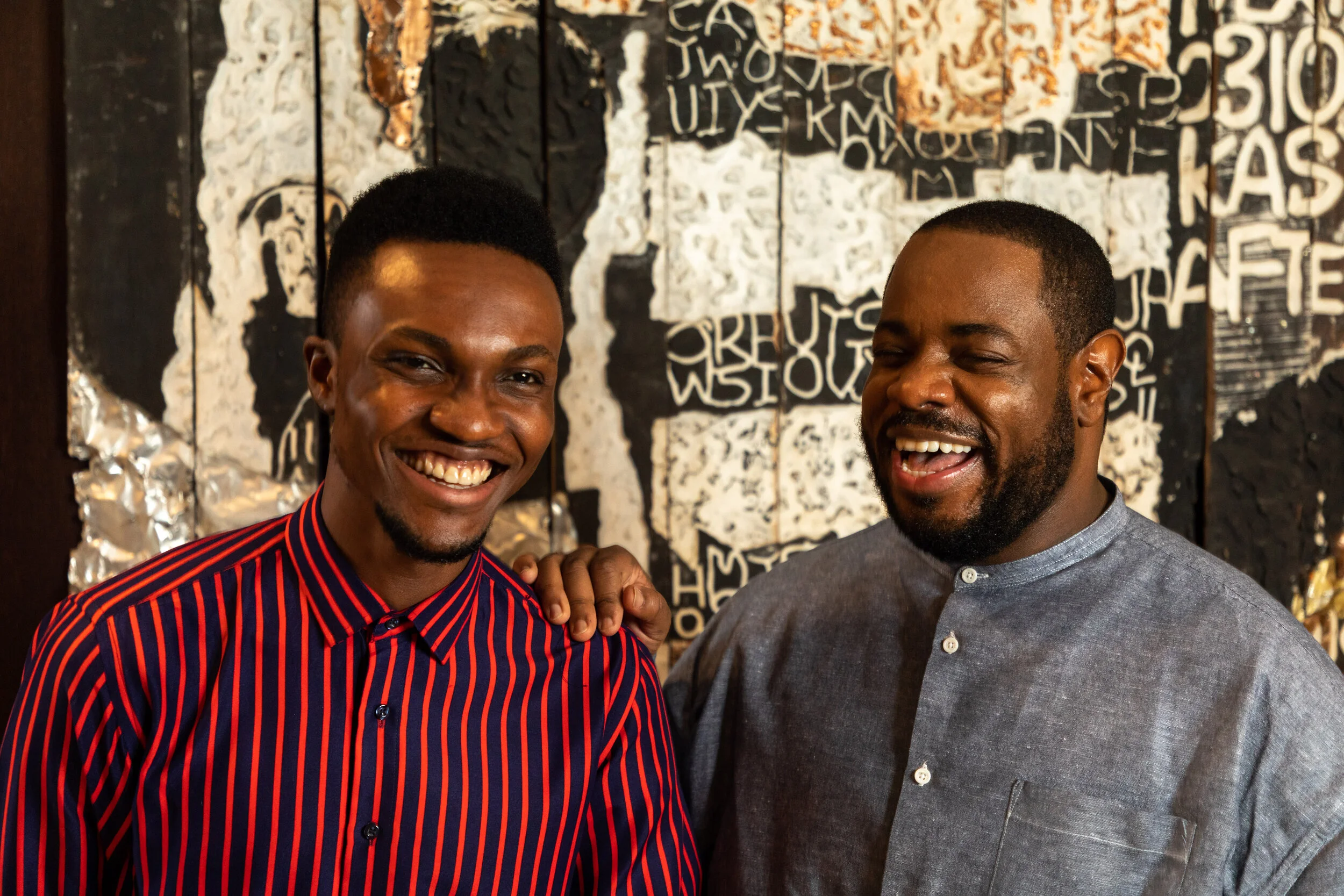DANNY DUNSON

“The problem with traditional discourse within the discipline of art history is that it privileges humans of a certain race, class, location, and gender, over others.”
Danny Dunson is an art historian, advisor, curator, and writer. Dunson graduated from the University of Illinois at Chicago with a degree in Art History and received both a Fullbright Grant and Gilman Scholarship. He founded the Legacy Brothers and The Lab, an artist development consultancy designed to prepare emerging artists of disadvantaged communities to enter the art world by providing grants for studio spaces, supplies, and living expenses.
In 2018, Dunson showed “In Memoriam, Portraits of the Middle Passage, In Situ,” an exhibition at the Cape Coast Castle Museum in Ghana, and recently curated “Collective Reflections: African and Diasporic Expressions of the New Vanguard” in Gallery 1957 in Accra, Ghana, which opened in December 2020 and ran through January 2021.
Interview by Maddy Neff
You are an art historian, advisor, curator, and writer. How do you balance these roles?
Well, the word “art” appears in front of every role for a reason: Everything I do depends on being a visual artist, my historical research, my experiences with contemporary living artists, and my genuine consideration of art as a visual form of language. Every role brings an energizing joy that keeps me motivated, but maintaining balance is challenging at times.
I find balance by working on projects one segment at a time because it allows me to focus and leverage the intersecting elements of each role and minimize stress. Balance is a state of mind; pausing, taking deep breaths, creating moments of stillness, and taking intermittent breaks, brings calm and ease to my day.
I have a thoughtful, engaged, trustworthy, and proactive staff! Their encouragement and efficacy help me to remain focused and diligent. There will always be days when the balance is out of sync; that’s when I take moments to assess priorities, connect with my supportive Legacy Brothers team, and garner encouragement from colleagues and loved ones.
Legacy Brothers Lab Artists from Nigeria with Founder Danny Dunson in Accra Ghana, October 2020. (left to right) Juwon Aderemi, Oliver Okolo, Danny Dunson, Luke Agada, Peter Ojingiri. Image by Paa Kewsi N. Okyere
I’d love to learn more about the formation of Legacy Brothers and the Legacy Brothers Lab.
The name ‘Legacy Brothers’ refers to my brother John Dunson and me being the legacy of our loving parents, our community, and the ancestral legacy of the African Diaspora at large. My brother has been a strong patron of my academic and creative endeavors. We wanted to create a professional name with the nostalgic feeling of early 20th-century industry, often family-owned and managed by brothers. Though Legacy Brothers is a new enterprise, it stands on a long-lived heritage of creativity, innovation, tenacity, and community building.
As Legacy Brothers LLC centralized its focus as an art consultancy in 2020, culminating years of academic and journalistic art writing, curatorial research, and collector advising, we answered the call of several artists around the world who needed support and guidance. The ‘Legacy Brothers Lab’ was formed at the dawn of the global outbreak of Covid-19. The world’s stillness created an opportunity for me to connect with artists several times a week virtually. As the days of lockdown continued, more and more knowledge and synergy were exchanged. A global incubatory arts residency had formed, and I began to structure the curriculum of these self-taught artists from Nigeria, Brazil, the United States, and Senegal. Each artist drafted a grant proposal that outlined what resources were needed to create a new series of work. In a short time, the artist’s work had developed exponentially, and I realized the importance of leveraging my education and resources to bring contemporary artistic voices to the forefront.
Please tell me a bit about Gallery 1957 and its inaugural exhibition, ‘Collective Reflections: Contemporary African and Diasporic Expressions of a New Vanguard.”
Gallery 1957’s flagship gallery is in Accra, Ghana. For decades, the African Diaspora has connected with the artist cultural practices of Ghana. Ghana is often referred to as the gateway of West Africa because it has historically welcomed the return of Diasporans and is a cosmopolitan hub welcoming artists, intellectuals, and cultural leaders worldwide. Ghana started my professional career as an art historian. I have lived and worked in Ghana intermittently since 2013. In 2017, I curated In Memoriam: Portraits of the Middle Passage, In Situ, an exhibition of Ghanaian Artist Kwame Akoto Bamfo that featured 1,100 sculptures of captured African Ancestors embarking on the life-changing journey of enslavement in the New World. During that time, I met the founder of Gallery 1957, Marwan Zakhem. Marwan and I connected as lovers of art and the shared interest in creating opportunities for artists living and working in Africa and unrepresented emerging artists of the Diaspora.
Collective Reflections: Contemporary African and Diasporic Expressions of a New Vanguard (installation view), December 2020. Presented by Gallery 1957, Accra Ghana. Curated by Danny Dunson. Image by Nii Odzenma. Courtesy of Gallery 1957
“Everything I do depends on being a visual artist, my historical research, my experiences with contemporary living artists, and my genuine consideration of art as a visual form of language.”
I planned a visit to Ghana to meet with the neighboring Nigerian artists of the Lab, to reconnect with dear friends, and catch up with my respected colleagues of the art world. Marwan has always supported and praised my talent as an art writer and a curator, but now he was impressed and excited by my latest venture that places emerging artists in the global market. In a couple of days, we decided to show all the artists of the Lab and three emerging artists from Ghana that I will continue to work with and support in the largest show the gallery has ever done. The exhibition was installed in two gallery spaces of Gallery 1957, showcasing over 80 pieces of work. It was such an honor to work with the refreshing excitement of Gallery 1957’s director Victoria Cooke and supporting staff. We look forward to doing it again next year.
Patrick Eugene, Portrait of a contemporary artist, 2020, oil & acrylic on canvas, 24 x 30 inches. Courtesy of the artist and Legacy Brothers
Patrick Eugene, You Asked About the Scars (detail), 2020, mixed media on canvas, 72 x120 inches. Courtesy of the artist and Legacy Brothers
What impact did COVID-19 have on the development of the exhibition?
It was a logistical challenge to ship work from three different continents during a pandemic, but it ended up being a historic and epic exhibition of exquisite art. All Lab artists, except one (due to pandemic travel challenges), could attend the opening. Lab artist Gustavo Nazareno of Sao Paulo, Brazil, flew for the first time and participated in the opening reception. We made sure to practice safety protocols during the entire exhibition’s planning and execution. Ghana has been fastidious in its enforcement of safety precautions: enforcing mask-wearing, hand washing stations, temperature checks, and rapid and convenient Covid-19 testing. Since the exhibition was in two gallery spaces, social distancing was facilitated with ease as attendees could spread out between spaces and spend time outdoors. I don’t think a show of this magnitude with live attendance could have happened anywhere during this time.
Gustavo Nazereno, Bará, Installation Series, 2020. Charcoal dust on paper, 19 x 25 inches each. Image by Nii Odzenma. Courtesy Gallery 1957
Yussif Musah, Where do we go? Hope, 2020, pastel and metallic gold paint on canvas, 120 x 85 inches. Courtesy of the artist and Gallery 1957
Installation image: Oliver Okolo. Courtesy of Legacy Brothers
Left to right: Aplerh-Doku Borlabi, Coiffure, 2020, coconut sheath and acrylic on canvas, 61 1/8 x 82 5/8 inches; Aplerh-Doku Borlabi, Tomboy, 2020, coconut sheath and acrylic on canvas, 68 7/8 x 82 5/8 inches; Aplerh-Doku Borlabi, Brown Sofa, 2020, coconut sheath and acrylic on canvas, 68 7/8 x 82 5/8 inches
Can you talk about your background?
I grew up in Gary, Indiana, about a 30-minute drive from the metropolis of Chicago. Gary was a 95% African American city when I was growing up in the 80s and 90s. The once-celebrated Indiana suburb of Chicago suffered from deindustrialization and white flight, and the first Black mayor of Gary was elected (the second Black mayor nationwide). Gary was called the “murder capital of the world” in international news outlets and had been cast down societally as crime-ridden with no resources. I grew up in the upper-middle-class neighborhood, Miller Beach, a Lake Michigan enclave, one of Gary’s communities that housed the city's wealthy and outlawed Blacks to reside.
My family was one of the first to integrate Miller Beach in the late 60s, but I was not a stranger to the inner city. I witnessed the entire scope of social and economic stratification, which allowed me to know that Blackness and Black people are not monolithic, and just as human as anyone else. Growing up in an all-Black city where I saw Black families, doctors, lawyers, ministers, judges, politicians, small business owners, teachers, and artists, among others, endowed me with a strong sense of self and reinforced the limitless possibilities of what I could achieve.
I attended Emerson School of the Visual and Performing Arts, a magnet school from 6-12th grade. I was a visual arts major, I started drawing in primary school, and my parents enrolled me in any extracurricular art programs on Saturdays. At Emerson, I was rigorously trained in Western art foundations, learning draftsmanship, painting, sculpting, and we were all required to study Western art history.
What initially inspired you to pursue a career in art? Did you have any significant mentors or supporters when you were starting?
My parents were the first to inspire me to be an artist at a young age. Every year I received art supplies for Christmas and birthdays. My mother, who painted and sewed as a hobby, noticed my talent first and helped cultivate it. I had a strong interest in fashion design, opposite of my father’s desire for me to design cars or aircraft, “ a more masculine and intellectual artistic profession.” Eventually, I gained the support of both of my parents to pursue fashion design as a career. Long story short, Feeling lost, unfocused and uninspired, I dropped out of art school and attended several universities, taking up several majors, with no success. Still, the only classes I would succeed in were art history courses.
Almost a decade later, after several attempts at higher learning, my father encouraged me to quit my job and to go back to school full time, with the family’s full financial support. This time he suggested that I study art history, which had proven to sustain my interest and focus successfully. I was reluctant, with low intellectual and academic confidence, but my family’s support directed me to start again. I was accepted to The School of Art and Art History at The University of Illinois at Chicago and majored in Art History. My time at UIC was life-changing because I was able to see myself as a member of an intellectual and artistic community. I met lifelong mentors: Professors Hannah Higgins, Jabari Jabir, and Sampada Aranke. I studied abroad in Ghana for four months and Morocco for six, conducting research in art that took me beyond the Western canonical narrative. I was able to centralize Non-Western art as a professional academic practice. In 2016-2017, I returned to Ghana as a Fulbright Scholar.
How would you define ‘Art History”? What are the failures of the definitions of Art History in academia?
I define art history as the study of humanity through the art object. Art has its agency, but this agency is brought about through a human encounter and engagement. The problem with traditional discourse within the discipline of art history is that it privileges humans of a certain race, class, location, and gender, over others. This problem is being observed more and more in the academic discourse, institutions, and galleries, and also the global art market. The events of 2020 engendered an external and internal self-examination of how art history is transmitted in contemporary times. I am so happy to witness friends and colleagues who are dismantling and reshaping historical narratives within the history of art through their curatorial and teaching practices.
What do you have in the works for 2021 and beyond?
The formation of Legacy Brothers was organic and intuitive. The project seems to have taken on wings, and I am fortunate to help develop and guide our commitment to emerging artists of color with new ideas and strategies. In 2021, we are excited to present the Legacy Brothers Salon. As a capstone project, each artist in residence will show a small body of work indicative of the development they experience in the residency. These solo presentations will showcase a sophisticated capsule of images highlighting the talents of individual Lab artists throughout the year.
The Collective Reflections will be reprised in collaboration with Gallery 1957 in December 2021, featuring the art of the 2021-2022 residency cohort, currently in the process of being selected.
Luke Agada and Danny Dunson. Courtesy of Legacy Brothers
Feature portrait of Danny Dunson by Christopher Marrs
All images courtesy of Legacy Brothers and Gallery 1957
Follow the Legacy Brothers on Instagram: @legacybros








